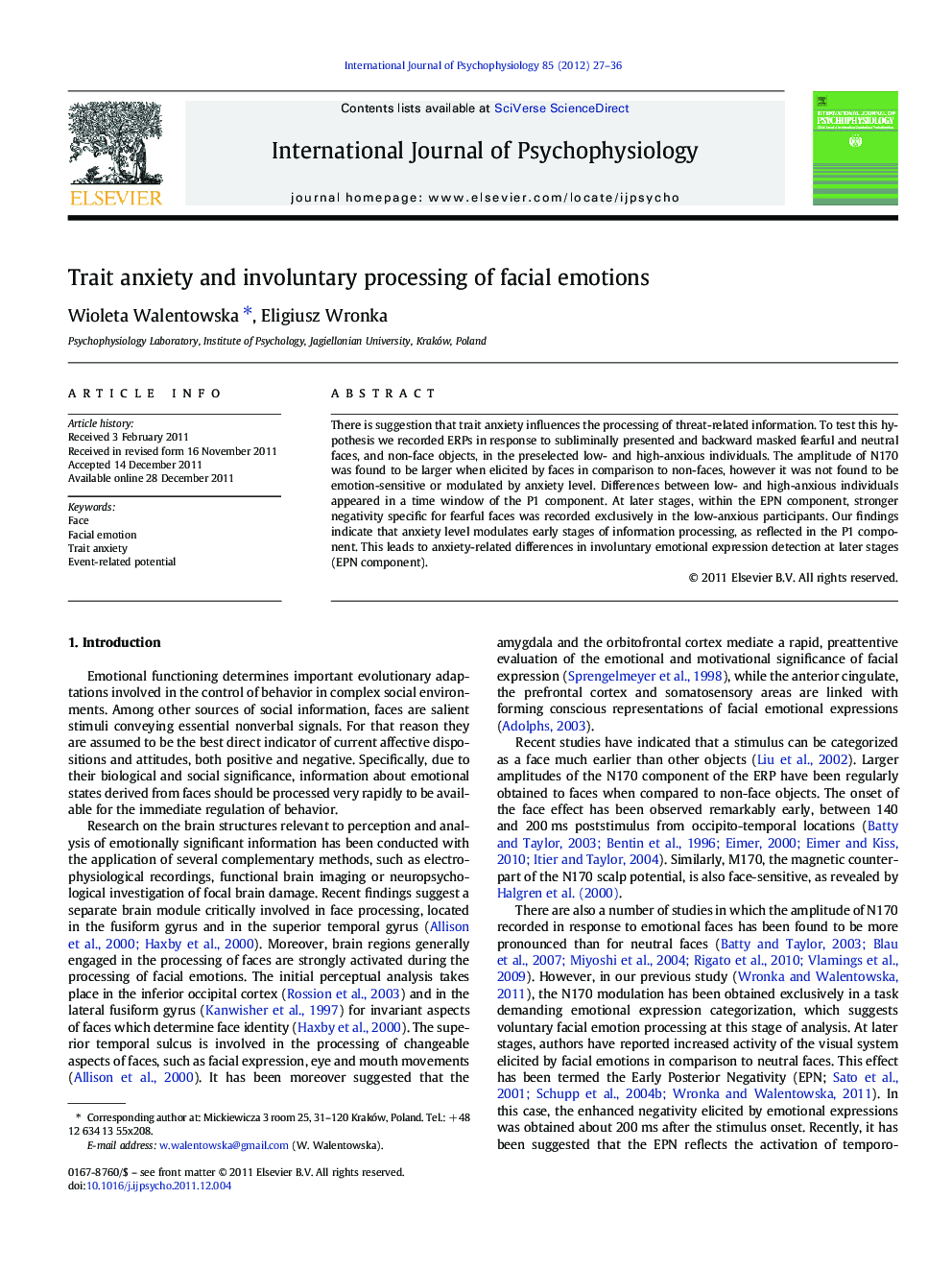| Article ID | Journal | Published Year | Pages | File Type |
|---|---|---|---|---|
| 930269 | International Journal of Psychophysiology | 2012 | 10 Pages |
There is suggestion that trait anxiety influences the processing of threat-related information. To test this hypothesis we recorded ERPs in response to subliminally presented and backward masked fearful and neutral faces, and non-face objects, in the preselected low- and high-anxious individuals. The amplitude of N170 was found to be larger when elicited by faces in comparison to non-faces, however it was not found to be emotion-sensitive or modulated by anxiety level. Differences between low- and high-anxious individuals appeared in a time window of the P1 component. At later stages, within the EPN component, stronger negativity specific for fearful faces was recorded exclusively in the low-anxious participants. Our findings indicate that anxiety level modulates early stages of information processing, as reflected in the P1 component. This leads to anxiety-related differences in involuntary emotional expression detection at later stages (EPN component).
►Faces evoke specific brain responses even in low awareness of the stimuli. ►Faces and non-faces are differentiated around 170 ms poststimulus. ►Facial emotions elicit stronger posterior negativity than neutral faces. ►Emotional expression processing is modulated by the level of trait anxiety.
